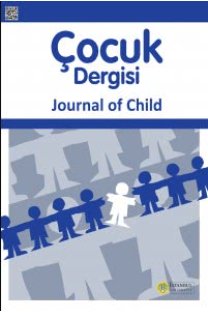Neonatal Glisin Ensefalopatisi
Ensefalopati, hiperglisinemi, yenidoğan
Neonatal Glycine Encephalopathy
Encephalopathy, hyperglycinemia, neonate,
___
- Volpe JJ. Hyperammonemia and other disorders of amino acid metabolism. In: Volpe JJ, ed. Neurology of the newborn, 4th ed. London: WB Saunders, 2001: 547-73.
- mia. In Scriver CR, Beaudet AL, Sly WS, Valle D, eds. The Metabolic and Molecular Bases of Inherited Disease, 1995; 7th edn. New York: McGraw-Hill, 1337-1348.
- ycinemia. In Aicardi J, ed. Diseases of the Nervous System in Childhood. London: MacKeith Press, 1992; 43:433.
- Cakmak FN, Kesimer M. Transient nonketotic hyperglycine- mia: Two case reports and literature review. Pediatr Neurol 2003; 28:151-5.
- biochemical, molecular and neurological aspects. Jpn J Hum Genet 1997; 42:13-22.
- Declercq P, et al. Benzoate treatment and the glycine index in nonketotic hyperglycinaemia. J Inherit Metab Dis 2005; 28: 651-63.
- Lee PJ, Levy HL. Pulmonary hypertension associated with nonketotic hyperglycinaemia. J Inherit Metab Dis 2000; 23:137-44.
- of early treatment of nonketotic hyperglycinemia. Pediatr Neurol 1996; 15:137-41.
- Treatment of late-onset nonketotic hyperglycinaemia: Effectiveness of imipramine and benzoate. J Inher Metab Dis 2000; 23:15-21.
- tory of nonketotic hyperglycinemia in 65 patients. Neurology 2004; 63:1847-53.
- rapy and carnitine deficiency in non-ketotic hyperglycinemia. Am J Med Genet 1994; 59:444-53.
- Niedermeyer E, Johnston MV. Dextromethorphan and high dose benzoate therapy for nonketotic hyperglycinemia in an infant. J Pediatr 1992; 121:131-5.
- Sawada T. Efficacy of tryptophan for the treatment of nonke- totic hyperglycinemia: a new therapeutic approach for modu- lating the N-methyl-D-aspartate receptor. Pediatrics 95(1):142-6.
- ISSN: 1302-9940
- Yayın Aralığı: 4
- Başlangıç: 2000
- Yayıncı: İstanbul Üniversitesi
Edinsel İnmemiş Testis: Vaka Sunumu
Melike Z. T. AKSAKAL, Murat SÜTÇÜ, Gülbin GÖKÇAY, Serpil UĞUR BAYSAL
Süt Çocukluğu Döneminde Tanı Alan Kartagener Sendromu
Atiye FEDAKAR, H Cavit AYDOĞDU, Erkan CAN, Ali FEDAKAR
Göbek Kordonu Alfa-Fetoprotein Düzeyi ile Neonatal Hiperbilirubinemi İlişkisi
Canan KUZDAN, Asuman Çelenk ÇOBAN, Zeynep İNCE, Ümit TÜRKOĞLU, Gülay CAN
Yineleyen Cilt İnfeksiyonlarıyla Seyreden Lökosit Adezyon Defekti Vakası
Müferet ERGÜVEN, Sinem Karaca ATAKAN, Asuman KIRAL
Alerjinin Bilinmez Sorununa Tanısal Yaklaşım: Kronik Ürtiker ve Anjioödem
Gürkan KILIÇ, Nermin GÜLER, Zeynep TAMAY
Neonatal Glisin Ensefalopatisi
Emrah CAN, Ali BÜLBÜL, Serdar CÖMERT, Fatih BOLAT, Füsun OKAN, Asiye NUHOĞLU
Bölgemizde Çocuklarda Bronşial Astım Tedavisinde Alternatif Tedavi Yöntemleri Kullanımı
Yusuf KAYA, Müferet ERGÜVEN, Emine TEKİN, Mehmet ÖZDEMİR, Öznur YILMAZ HAMZAH
